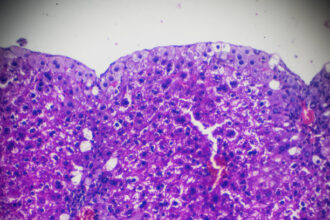Laryngitis
Laryngitis refers to inflammation of the laryngeal mucosa, which can be acute or chronic. It is commonly associated with respiratory infections and environmental irritants.
Key Points
- Acute laryngitis is often viral or bacterial and linked to upper respiratory infections.
- Chronic laryngitis results from prolonged irritation or recurrent acute episodes.
- Symptoms include hoarseness, sore throat, and dry throat.
- Management includes voice rest, hydration, and addressing underlying causes.
Acute Laryngitis
Etiology and Pathogenesis
- Infectious causes: Viral (e.g., rhinovirus, influenza virus), bacterial (e.g., Streptococcus, Staphylococcus).
- Non-infectious factors: Dust, smoke, harmful gases, excessive voice use, foreign objects.
- Pathophysiology: Mucosal congestion, edema, neutrophilic infiltration, and mucopurulent exudate.
Clinical Features
- Sore throat and hoarseness.
- Dry throat and discomfort while speaking.
- Fever and malaise in infectious cases.
Diagnosis
- History and physical exam: Recent upper respiratory infection, hoarseness, throat examination.
- Laryngoscopy: Visualize mucosal changes, congestion, or exudate.
Treatment Principles
- Voice rest: Avoid speaking or whispering to reduce strain.
- Hydration: Drink plenty of fluids to soothe the throat.
- Nebulization: Saline or medicated inhalation to reduce inflammation.
- Medications:
- Antibiotics for bacterial infections (e.g., amoxicillin, azithromycin).
- Glucocorticoids for severe inflammation (e.g., prednisone short course).
Chronic Laryngitis
Etiology and Pathogenesis
- Chronic irritation: Smoking, dust inhalation, excessive voice use, improper pronunciation.
- Associated conditions: Chronic rhinitis, sinusitis, GERD.
- Pathophysiology: Capillary dilation, lymphocytic infiltration, mucosal hypertrophy or atrophy, squamous metaplasia.
Clinical Features
- Persistent hoarseness and dry throat.
- Foreign body sensation in the throat.
- Sore throat when speaking; occasional spasmodic cough.
Diagnosis
- History and physical exam: Duration of symptoms, exposure to irritants, throat examination.
- Laryngoscopy: Assess mucosal changes, hypertrophy, or atrophy.
Treatment Principles
- Voice care: Limit voice use; practice proper pronunciation techniques.
- Lifestyle changes: Quit smoking and alcohol, improve work environment.
- Treat associated conditions: Manage chronic rhinitis, sinusitis, or GERD.
- Medications:
- Topical treatments: Throat sprays, saline irrigation.
- Systemic antibiotics or anti-inflammatory agents as needed.
Prevention
- Avoid smoking, alcohol, and exposure to pollutants.
- Practice good voice hygiene and avoid excessive strain.
- Treat underlying conditions to prevent recurrence.
- Maintain hydration and a balanced diet to support mucosal health.
Complications and Referral
- Complications: Vocal cord nodules, chronic hoarseness, airway obstruction in severe cases.
- Referral criteria: Persistent symptoms despite treatment, suspected malignancy, or significant airway compromise.
Patient Education
- Rest your voice and stay hydrated during acute episodes.
- Avoid irritants and practice proper voice techniques.
- Follow up with an ENT specialist if symptoms persist or worsen.







